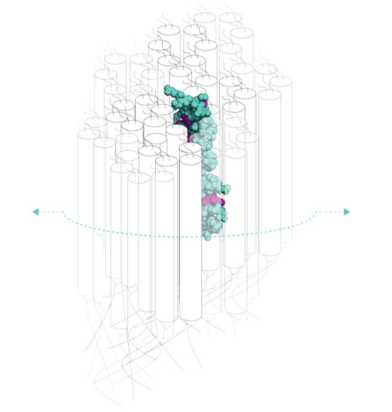Starch phase transition – The ‘Domino effect’
A Science Advances article, published by the Zeeman group (IMPB) in collaboration with Prof. Coralie Bompard (University Lille), shifts a long-standing paradigm: That starch crystallization is a spontaneous physical process. The work provides compelling evidence for protein factors being involved.

Starch, a major constituent of human nutrition, is made by plants as a storage compound and forms as semi-crystalline, insoluble granules. The framework of those granules is provided by the complex, branched glucan amylopectin, in which pairs of chains form double helices that pack into crystalline layers. The enzymatic steps of amylopectin biosynthesis are well understood, but the mechanisms governing its subsequent crystallization have remained elusive.
Liu et al. used a multilayered approach to show that the starch-binding protein LIKE ESV1 (LESV) contributes to this process. The protein contains an unusual beta-sheet domain featuring stripes of presumably carbohydrate-binding aromatic amino acids. Different biological systems (an engineered yeast system and the model plant Arabidopsis) showed that LESV increases the transition of glucans from a soluble to an insoluble, semi-crystalline phase, presumably by aligning glucan double helices on its beta-sheet domain, thereby nucleating a self-propagating crystallization process – a “domino effect”. This is consistent with the phenotype of Arabidopsis lesv mutants, which are severely defective in starch production when granules have to be formed from scratch. These findings reveal a fascinating and previously unstudied mechanism underlying the insoluble nature of starch – which is crucial for its biological role as a dense, inert storage compound, and also central to its many functional properties in food and non-food industries.
Link to the paper in "external pageScience Advances"
